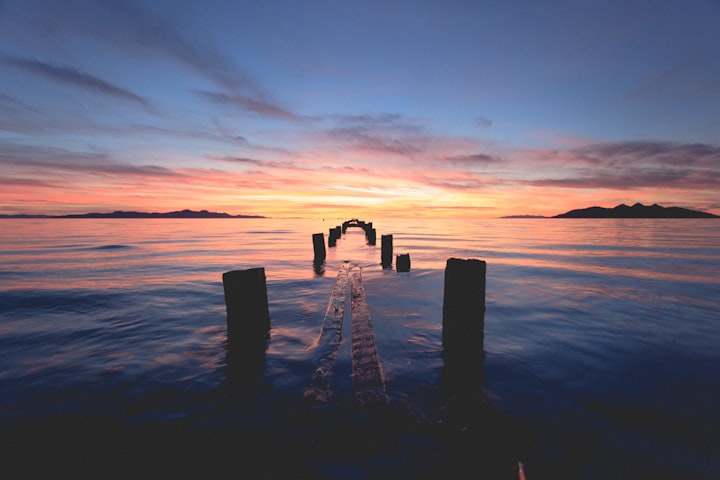
Have you ever wondered what lies at the deepest depths of the Earth? While many people can easily name the highest mountain on Earth as Mount Everest, not everyone knows about the deepest hole on our planet. It's not the Mariana Trench, as some might guess, but rather a man-made marvel that surpasses even the depths of the famous trench.
This extraordinary hole was not created by nature but by human hands, and what lies at its bottom is a mystery that no one anticipated. Join me as we embark on a journey to explore some of the deepest holes on Earth and unravel the secrets hidden within them.
Let's start with Chand Baori, a stunning stepwell located in Rajasthan, Eastern India. Unlike what you might imagine, Chand Baori is not just a simple circular cavity but a complex architectural marvel. Built during the eighth century, this stepwell features 3,500 narrow steps cascading down 13 stories, providing the region with a reliable water source long before modern infrastructure existed. Despite the daunting descent, the reward at the bottom is a sight to behold – murky green, stagnant water that has sustained generations and offers a unique perspective rarely found in such structures.
Next, we journey to the Yamal Peninsula in the Siberian wilderness, where a mysterious perfectly circular hole known as the Yamal hole appeared seemingly out of nowhere in 2014. Stretching 66 feet across with a terrifying 170-foot drop, this enigmatic cavity puzzled scientists and conspiracy theorists alike. While some speculated about extraterrestrial involvement or secret military activities, the most plausible explanation points to natural processes, such as the formation of pingos or the release of methane gas from underground ice formations.
Moving on to the Monticello Dam spillway in California, we encounter a massive circular waterhole that serves as an overflow drain to prevent damage to the dam structure during periods of excess water. With a depth of 200 feet, this colossal spillway channels water at a staggering rate, posing a significant hazard to anyone caught in its powerful currents. Tragically, its allure proved fatal for a woman named Emily Schwa in 1997, highlighting the dangers lurking within these seemingly innocuous holes.
As we venture deeper into the heart of Texas, we come across the Devil's Sinkhole, a foreboding circular crevasse that plunges 350 feet into the earth. Named for its eerie appearance and home to millions of Mexican free-tailed bats, this natural wonder offers a glimpse into the geological forces that shape our world. While its origins may not be diabolical, the sinkhole's imposing presence serves as a reminder of nature's awe-inspiring power.
Our journey takes us to the desolate landscape of Al Mahara in Eastern Yemen, where the Well of Hell casts a sinister shadow over the barren terrain. This vast void, nearly 100 feet wide and 367 feet deep, emanates a foul stench that hints at its otherworldly origins. Despite its ominous reputation, brave explorers have descended into its depths, uncovering hidden waterfalls, stalagmites, and cave pearls that defy explanation.
Venturing further into the depths of the ocean, we encounter the Great Blue Hole off the coast of Belize, a massive sinkhole formed over 15,000 years ago during the last ice age. With a diameter of 1,043 feet and a depth of 407 feet, this underwater marvel harbors a diverse ecosystem of marine life, including sharks, rays, and barracudas. Its haunting beauty serves as a testament to the Earth's geological history and the forces that shape our planet.
Returning to dry land, we explore the Kimberly Diamond Mine in South Africa, also known as the Big Hole, a colossal chasm that stretches over 1,500 feet wide and plunges 705 feet deep. Originally a diamond mine, this gaping chasm bears witness to the human pursuit of wealth and the sacrifices made in its pursuit. Despite its abandonment, the Big Hole remains a testament to human ingenuity and the indelible mark we leave on the Earth's surface.
Continuing our journey to the Dragon Hole in the South China Sea, we encounter the world's deepest blue hole, plunging 987 feet into the ocean's depths. This abyss, shrouded in mystery and legend, holds the key to unlocking the secrets of the deep sea. While its depths remain largely unexplored, the Dragon Hole serves as a reminder of the vast unknown that lies beneath the surface of our planet.
As we reach the end of our expedition, we encounter the Kola Superdeep Borehole in northwestern Russia, the deepest man-made hole on Earth. With a depth of over 40,000 feet, this monumental feat of engineering offers a glimpse into the Earth's inner workings and the challenges of exploring the unknown. While the project ultimately fell short of its goal, it remains a testament to human curiosity and the relentless pursuit of knowledge.
From the towering peaks of mountains to the abyssal depths of the ocean, the world's deepest holes hold a wealth of secrets waiting to be discovered. As we continue to explore and uncover the mysteries of our planet, these remarkable geological formations serve as a reminder of the enduring power and beauty of the natural world.
About the Creator
Benjamin
"Welcome to my Vocal Media profile, where curiosity knows no bounds, join me on a journey through a diverse range of captivating articles. Every read promises a new adventure, so buckle up and let's explore together!"






Comments
There are no comments for this story
Be the first to respond and start the conversation.